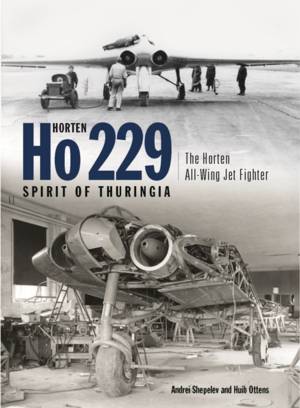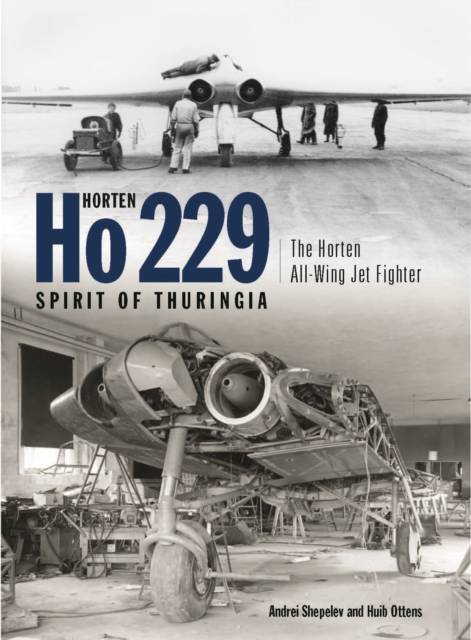
- Afhalen na 1 uur in een winkel met voorraad
- Gratis thuislevering in België vanaf € 30
- Ruim aanbod met 7 miljoen producten
- Afhalen na 1 uur in een winkel met voorraad
- Gratis thuislevering in België vanaf € 30
- Ruim aanbod met 7 miljoen producten
Zoeken
Horten Ho 229 - Spirit of Thuringia
The Horten All-Wing Jet Fighter
Andrei Shepelev, Huib Ottens
Hardcover | Engels
€ 41,95
+ 83 punten
Omschrijving
The Horten Ho229 effectively one of the Luftwaffe's legendary secret projects or so-called wonder weapons was one of the most enigmatic aircraft designs to emerge from World War 2. In terms of design it was in some ways a precursor of the 'stealth' concept and when viewed in relation to its contemporaries, it was clearly years ahead of its time. The Ho 229 was planned as the first of the next generation of German jet fighters to follow on from the Messerschmitt Me 262. The intention was to create a high-speed cannon-equipped fighter-bomber and reconnaissance aircraft. The aircraft, which saw figures such as Goering, Galland and Lippisch involved in its development, commenced flight testing in December 1944 and it was planned to re-equip the Me 163 equipped JG 400 with the Ho 229 later in the war.
This book charts in detail the development and operational record of the Horten Ho 229. One of the prototypes J3 survives in the USA and the book will included specially commissioned photographs of this survivor. In total, the book will have some 200 photographs, many of which are previously unpublished, alongside highly detailed scale drawings, the latter produced by Arthur Bentley, another leading authority on the Horten design.
This book charts in detail the development and operational record of the Horten Ho 229. One of the prototypes J3 survives in the USA and the book will included specially commissioned photographs of this survivor. In total, the book will have some 200 photographs, many of which are previously unpublished, alongside highly detailed scale drawings, the latter produced by Arthur Bentley, another leading authority on the Horten design.
Specificaties
Betrokkenen
- Auteur(s):
- Uitgeverij:
Inhoud
- Aantal bladzijden:
- 128
- Taal:
- Engels
Eigenschappen
- Productcode (EAN):
- 9781903223666
- Verschijningsdatum:
- 15/11/2015
- Uitvoering:
- Hardcover
- Formaat:
- Genaaid
- Afmetingen:
- 229 mm x 310 mm
- Gewicht:
- 889 g

Alleen bij Standaard Boekhandel
+ 83 punten op je klantenkaart van Standaard Boekhandel
Beoordelingen
We publiceren alleen reviews die voldoen aan de voorwaarden voor reviews. Bekijk onze voorwaarden voor reviews.











